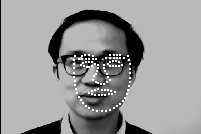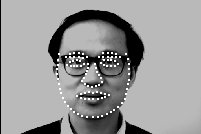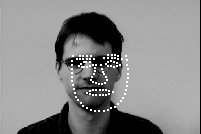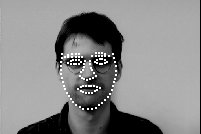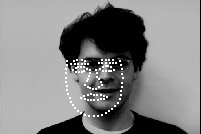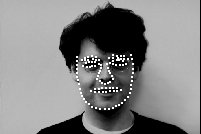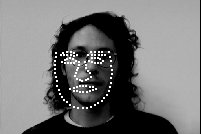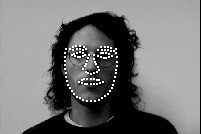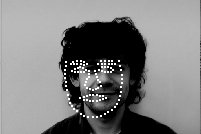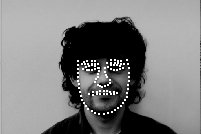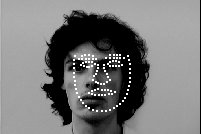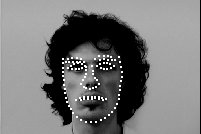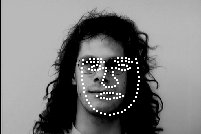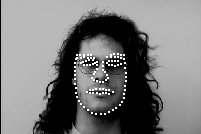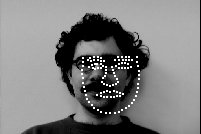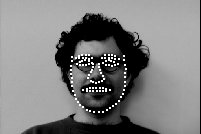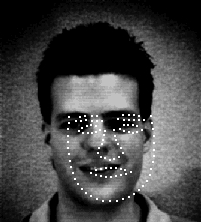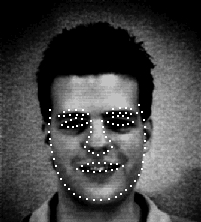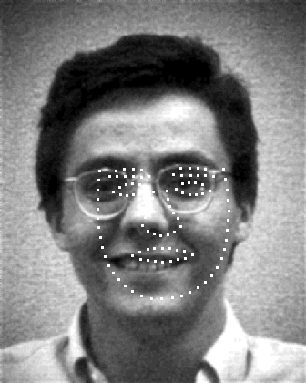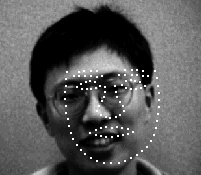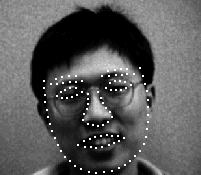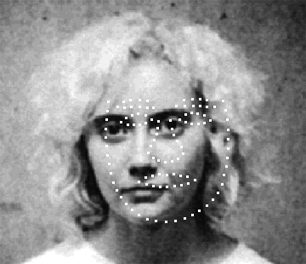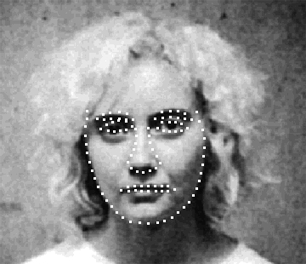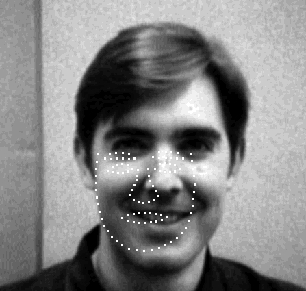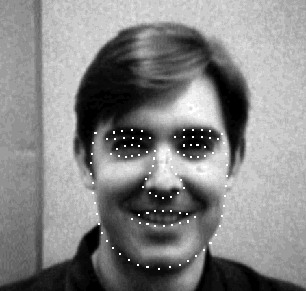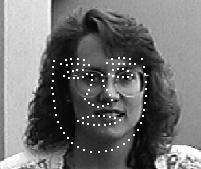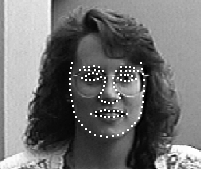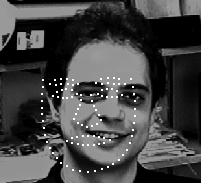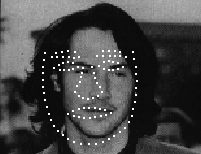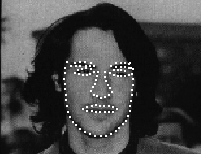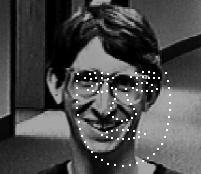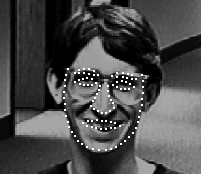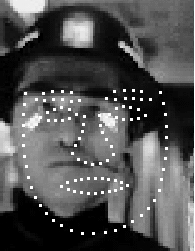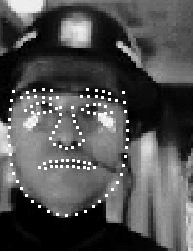Face Extraction Using EigenSnakes
A rigid template, such as Hough Transform, allows global deformation
only. Deformable template or active contour model (snake) allows also
local deformation, but would be too "floppy" for face extraction if
insufficient prior knowledge about expected shapes is incorporated.
In EigenSnake,
-
Prior knowledge about expected shapes
is incorporated by a statistical model,
-
An affine invariant shape model
is integrated for accounting for global deformation due to rigid motion.
-
The ability of normal snake
models to account for local deformation is retained.
-
A Bayesian scheme is employed to
integrate general knowledge about shapes and observation.
A "shape space" is used to restrict
the search of the optimum solution (in the Bayesian sense.
METHOD
Bayesian Formulation and Energy Functions: Using Bayesian
framework, the problem to extract a contour with unknown deformation
from a noise image can be posed as a problem of maximum a posterior
(MAP) estimation
 where f denotes the contour, d is the input image,
u is the translation of f from the target object. The MAP
estimates are then obtained by
where f denotes the contour, d is the input image,
u is the translation of f from the target object. The MAP
estimates are then obtained by
 Eigensnakes for face extraction: Our model for face extraction
consists of 7 EigenSnakes, each corresponding to a facial feature.
Eigensnakes for face extraction: Our model for face extraction
consists of 7 EigenSnakes, each corresponding to a facial feature.
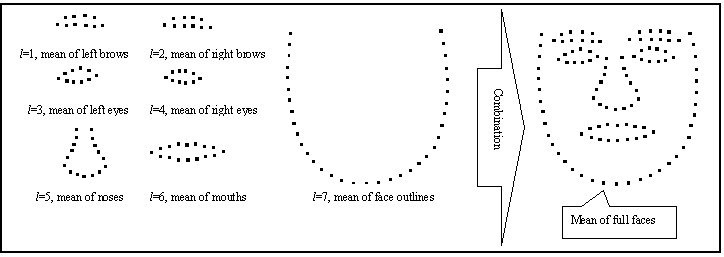
EXPERIMENT
This experiment demonstrates the EigenSnake applied to extract a full
face with 7 facial features. The training set consists of 120 frontal
face images from the face database of Bern university. There are two
testing sets: (i) The first is a normal testing set. It consists other
(which are not used to train) 60 frontal face images also from the Bern
face database. (ii) The second is a difficult testing set chosen from
the face database of Carnegie Mellon University; this set contains
samples with much more noise, occlusion and other structures than those
previously used in most successful face extraction experiments.
A total of 108 landmark points is used to represent a full face, among
which 10 for left brow, 10 for right brow, 10 for left eye, 10 for right
eye, 17 for nose, 16 for mouth and 35 for the face boundary. The means
of the training contours are used as initial prototype contours of 7
g-snakes and an EigenSnake respectively.
Contour initialization is done manually, as a common practice for
snakes. It has the same shape as the mean contour but it is re-scaled
randomly to between 70% and 120% of the true mean scale, shifted away
randomly from the true position by between +- 20 pixels, and rotated
randomly from the true orientation in the range of +- 15 degrees. All
the methods have the same initial contour for each test image.
Overall, it has been demonstrated by experimetns that the EigenSnakes
-
can correctly locate the full face contours if the initial distance
between the initial contour and the target object is in the scope of one
fourth of the initial contour,
-
is scale and rotation insensitive to a great extent,
-
can resist the misguide due to other
structure or noise.
The following are some experimental results (initial contour on the left
and final contour on the right):
Images from clear face databases
Images from difficult face databases
0. System Structure
1. Learning-based face detection
2. Face extraction using EigenSnakes
3. NFL-based face recognition




